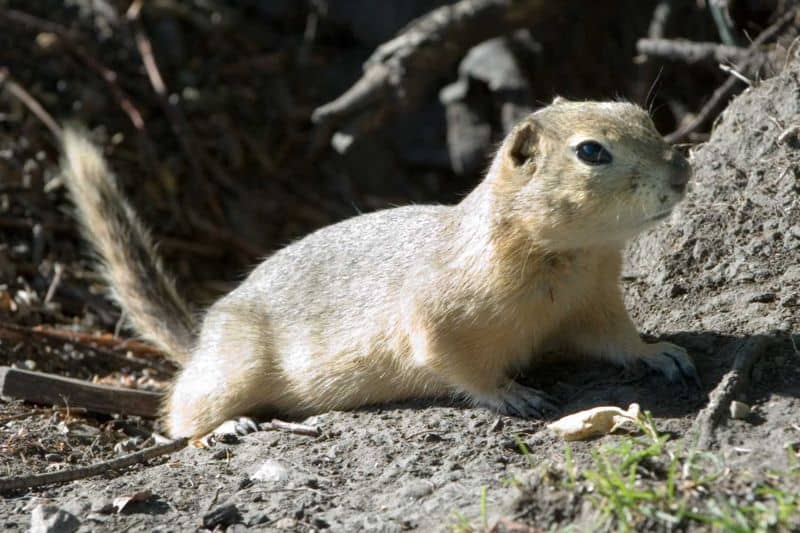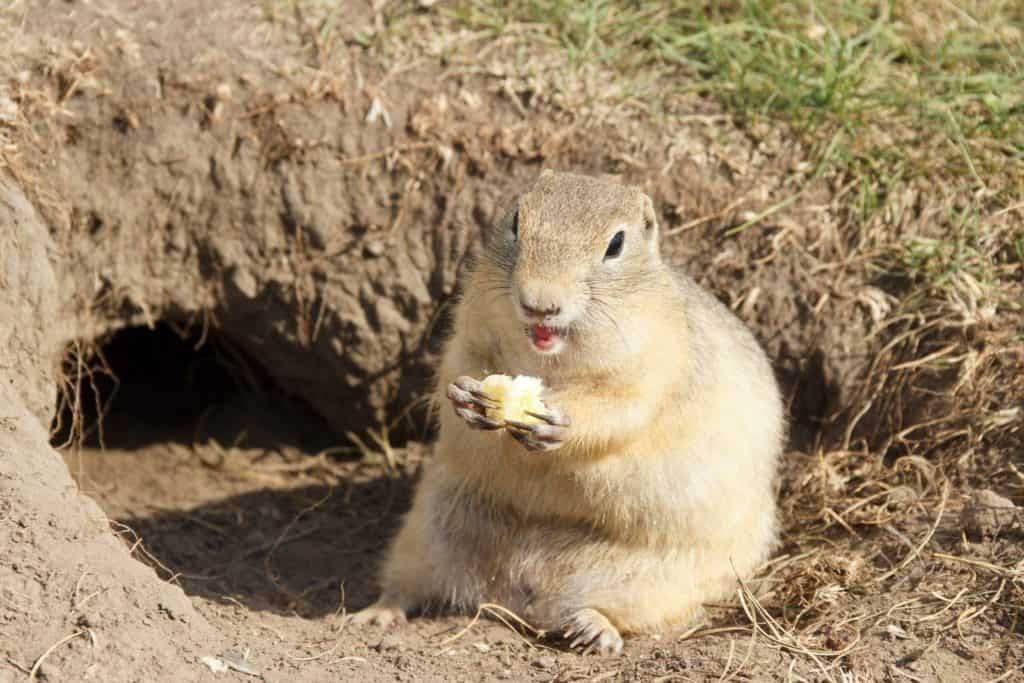Are gophers nocturnal or diurnal animals? Gophers are fossorial rodents with varying sleep patterns. Fossorial animals spend most of their life underground, especially during the day. Gophers have two sleep cycles during the day and are active for roughly 400 minutes or about seven hours each day. Given the fact that these animals live below the surface, it is natural to wonder about their secret behavior. This article explores the sleep behavior of these animals and discusses whether gophers are nocturnal or diurnal.
Gophers Are Nocturnal and Crepuscular

Gophers are nocturnal and sleep most of the day but have crepuscular and diurnal tendencies. Pocket gophers are an example of this sleep pattern. They display high activity levels between midnight and 4 a.m. and from 4 p.m. to 8 p.m. However, researchers show that American gophers distribute their activity sessions throughout the day rather than exhibiting distinct sleep and wake cycles. This activity is an example of cathemeral or metaturnal behavior. But gophers do not restrict their movement to nighttime and twilight periods as they may be active during the day.
In winter, when it is relatively dark, gophers may sleep during the night or day. But they sleep most of the day in summer, spring, and autumn. When gophers get tired and find a safe resting place, they sleep. Since they sleep underground, no sunlight wakes them, especially in winter, which is why they rarely leave their burrows. These animals are active for roughly seven to nine hours a day in the summer and spend the rest of the time resting. Depending on the gopher’s sleep cycle, it may be nocturnal, diurnal, or even a mix of both.
Nocturnal Gopher Sleep Cycles
Gophers do not follow the same sleep cycle as humans. Humans have an 8-hour sleep cycle and are awake for the rest of the day. These rodents have two short sleep cycles that are several hours apart. The first sleep cycle is from early morning to noon, the period between the pocket gopher’s return to its burrow and emergence in the afternoon from foraging in the evening. This sleep cycle is longer than the second sleep cycle.
Meanwhile, the second big sleep cycle is in the late afternoon. At this point, the temperature cools down enough for the pocket gopher to stay in its burrow. Being shy animals, gophers don’t like to stay outside longer than necessary, so they return to their burrows to rest before heading out for the night when it’s safe. Typically, this sleep cycle is shorter than the first, with both depending on environmental conditions and circumstances.
Gophers Have Poor Eyesight
Gophers have poor eyesight. They rely on their other senses, mainly touch and smell, so they don’t need keen vision. It is reasonable to assume that natural selection did not prioritize the eyes, as with land animals. Instead, gophers nocturnal vision adapted to the dark environment of their burrows.
Compared to fossorial rodents, the gopher’s eyes do not appear much smaller. This eye size may be due to the amount of light entering the burrow and the fact that the gopher sometimes emerges from its home. However, the light that enters the shelter is minimal. That’s why the gopher’s eye retinas are so thin. This retina size limits their vision or range. But, their limited visual capacities do not appear to restrict their mobility since they can quickly navigate their terrain when necessary.
Nocturnal Gophers Rely on Their Sense and Touch

ToKa74/Shutterstock.com
Like other burrowing mammals that rarely leave their underground homes, pocket gophers rarely use their eyes. However, the degeneration of this organ is not as advanced as in moles. Studies prove that pocket gophers do not have sharp vision, so they have a minimal visual field.
On the other hand, when scientists examined the animal’s sensory responses to stimuli, they discovered that the gopher’s tactile and olfactory organs are very well developed. The short, stocky tail, which is almost hairless, is particularly sensitive to stimuli. Observations during the mating season also suggest that this sensory function helps gophers to locate animal species. These nocturnal animals can also detect the presence of certain enemies, especially weasels, invading their burrows using these sensory abilities.
Gophers Are Active Throughout the Seasons
Nocturnal or crepuscular gophers store food during harvest and do not hibernate. They seem to be more or less busy at times when the earth isn’t too frozen or too hard because of intense heat. Gophers continue to dig even when the soil is damp or dry. You may see fresh heaps of dirt in the middle of the snow that they dig up during the winter.
Even under this cover, nocturnal gophers pack dirt into snow tunnels that, when later melted, leaves soil that fills ridges, resembling sections of heavy cables. Especially in bad winter weather, gophers can dump the dirt they dig into old quarries to continue to forage.
Gopher burrowing is active all year round but usually resumes more vigorously in the fall. The gopher’s burrowing behavior is more earnest when the summer drought ends, and soil conditions make digging easier. Gophers are busy accumulating food at this time of year, and their young start to build their quarters. These animals also resume their activity after the frost in spring or when vegetation begins growing again. However, during the drier months of midsummer, their activity slows down.
Gopher Daily Activity
Total gopher daily activity averages 400 minutes per day, which is almost seven hours. The duration of their activity depends on the time of day. Morning activities are the shortest, and afternoon activities are the longest, with nocturnal gopher activities being of moderate extent, according to research.
The overall activity pattern of gopher behavior is best described as a mechanism for avoiding extreme burrow temperatures. Gophers can conserve their energy by staying in their burrows in the morning when they are the coolest. Also, they can reduce the risk of hyperthermia by avoiding activity in the late afternoon when their shelters are warmest. Researchers note that this observed pattern of activity was probably due to their environmental conditions.
Gophers Have Different Nocturnal and Diurnal Activities
These animals are active day and night, but their activity levels vary depending on the time of day. A gopher is a fossorial animal. That means they spend most of their life underground, especially during the day. Gophers spend most of their day digging and foraging in the safety of their tunnels. They have learned to collect what they need without leaving their homes. These animals also eat plant roots or pull plants down from the ground’s surface for consumption. So if you notice things disappearing from your yard, it might be a gopher.
Gophers only go out when necessary, such as when the tunnel becomes too uncomfortable. Even if they go out, day trips are much shorter than night trips when they can stay out all night. The presence of predators such as birds and snakes drives this activity pattern. These and other predators can easily catch gophers during the day, prompting them to confine most of their activity to nocturnal hours.
So, these little rodents become braver when the sun goes down. Darkness means protection as it makes them harder to find, and some potential predators may be asleep. For the gophers, it’s an opportunity to go out and find food in relative safety. They can gather what they need from the surface, ensuring they can stay inside for longer.
Nocturnal Gophers Do Not Hibernate

eumates/Shutterstock.com
Gophers do not hibernate and remain active through the winter, but their activity varies. During this time, gophers rarely come out of their burrows. With less food on the earth’s surface, gophers have less reason to go to the surface. Instead, they dig in deeper for the duration of the chilly weather. The gopher then changes its diet from fruit to roots and other plants accessible below the earth’s surface. They use their powerful claws to continue digging and searching long after the soil has hardened above and around them.
Nocturnal vs. Diurnal: What’s The Difference?
Navigate to Nocturnal vs. Diurnal: What’s The Difference? for further information about the nocturnal and diurnal phenomenon in various living creatures.
Up Next –
- 10 Incredible Gopher Facts
- What Do Gophers Eat? A Complete List of Their 8 Favorite Foods
- Gopher Teeth: Everything You Need To Know
- Groundhog vs Gopher: 5 Key Differences
The post Are Gophers Nocturnal Or Diurnal? Their Sleep Behavior Explained appeared first on AZ Animals.
from Animal News, Facts, Rankings, and More! - AZ Animals https://ift.tt/RhpLuqY